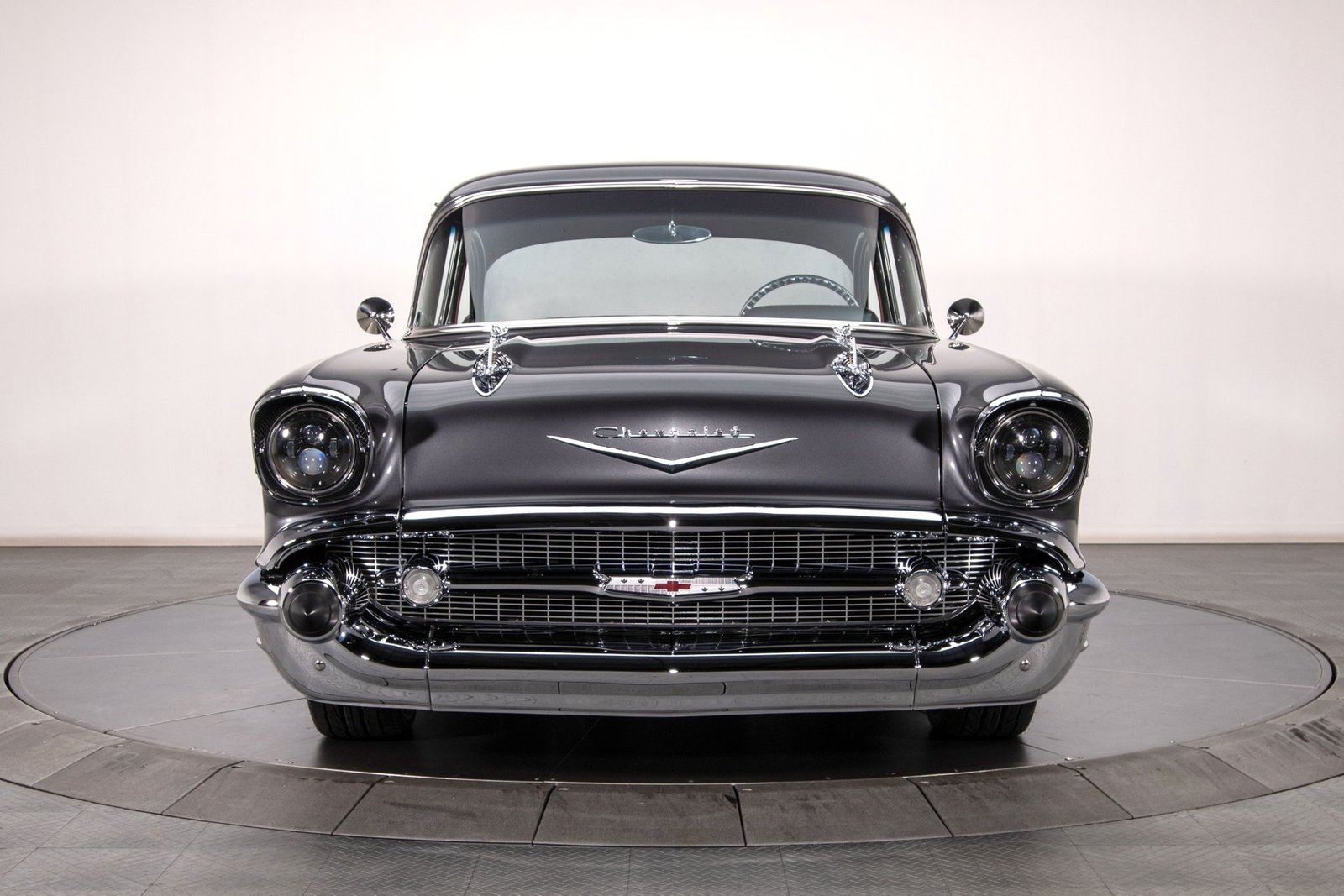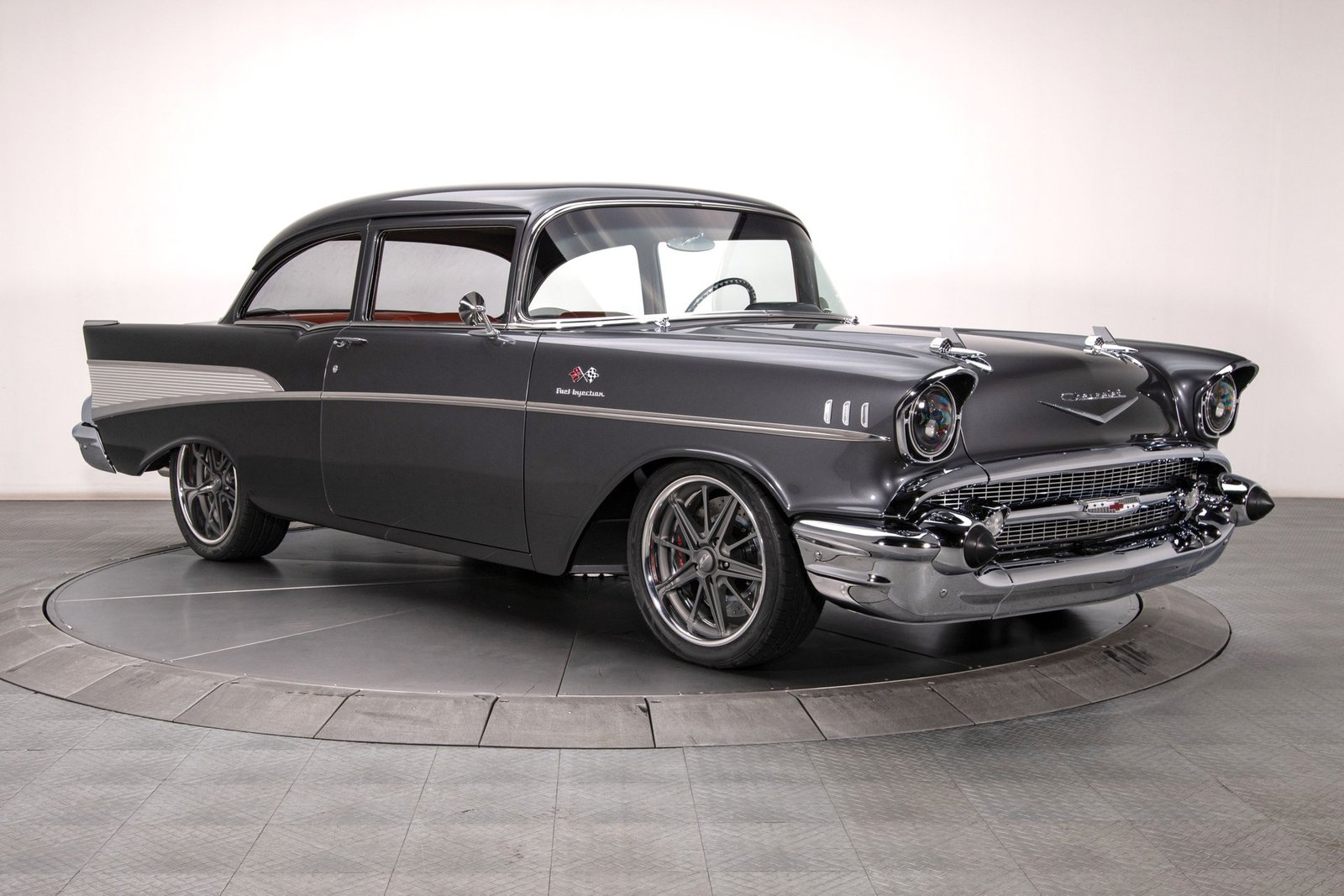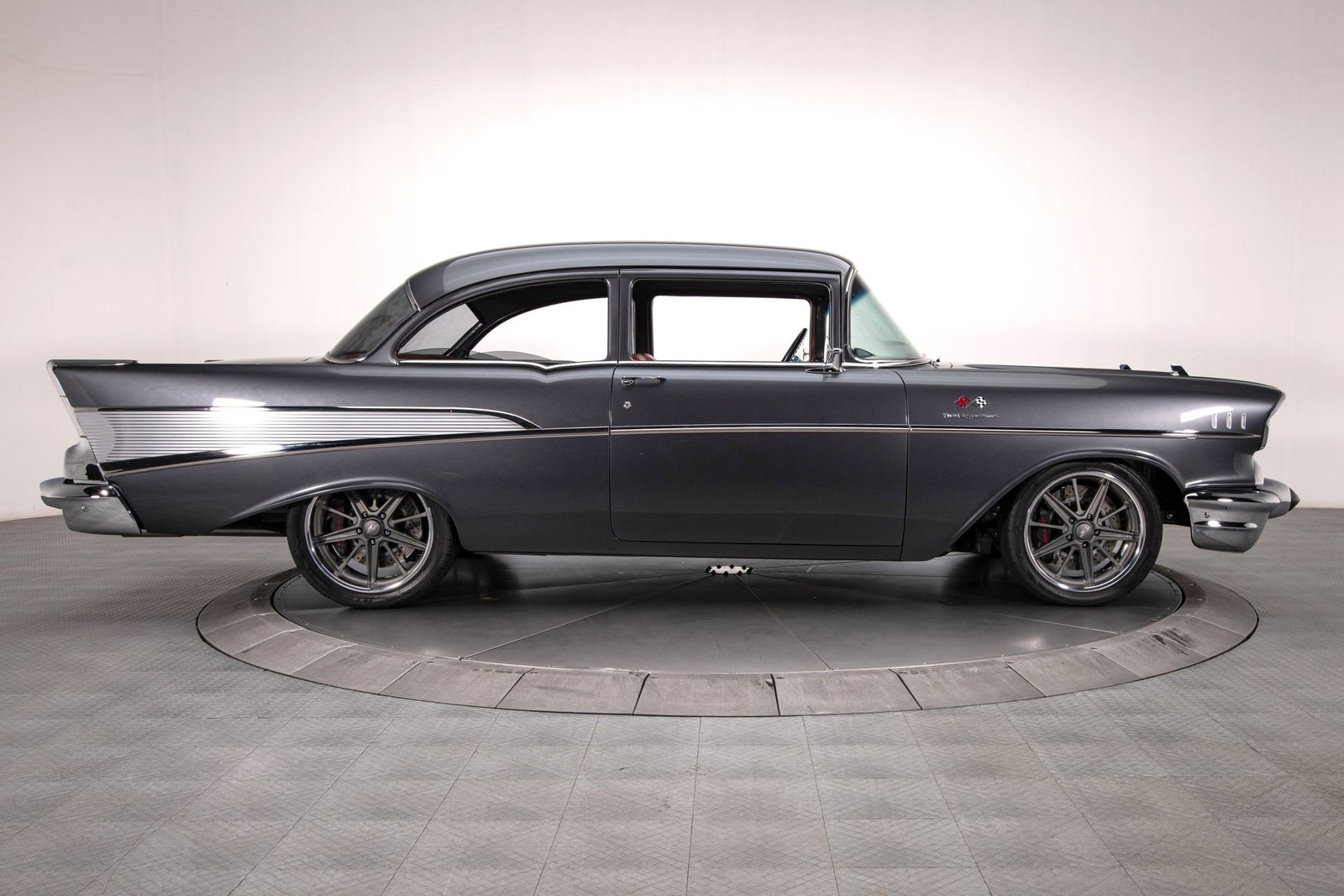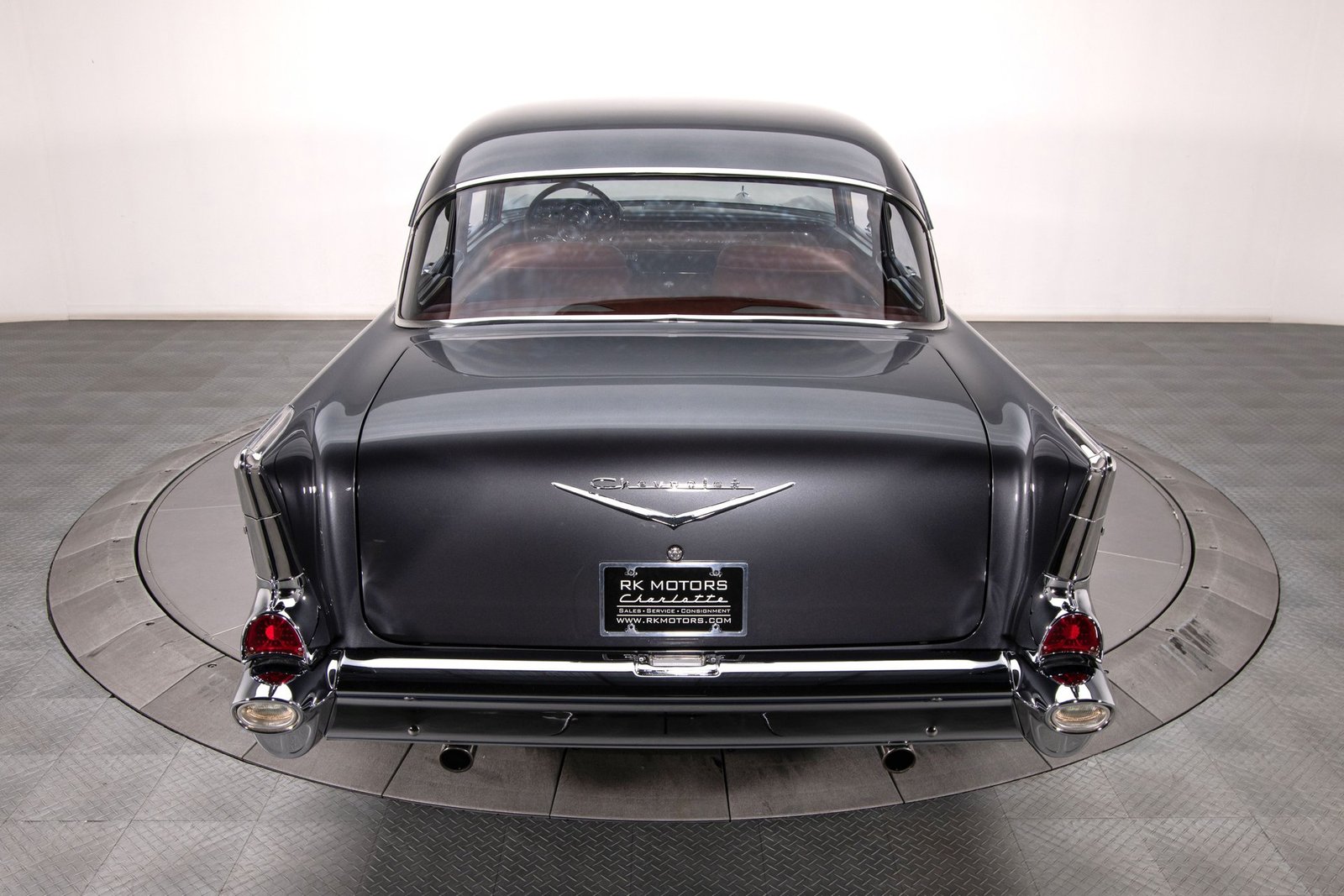The Iconic 1957 Chevrolet 210 – An Automotive Legend
The 1957 Chevrolet 210 is one of the most iconic American cars ever made. With its sleek styling and smooth V8 engine, the ’57 Chevy captured the imagination of a generation and became a symbol of 1950s American culture. At the heart of Chevrolet’s 1957 lineup was the legendary 210 model. More than any other car, the 1957 Chevrolet 210 epitomized the style, performance and excitement of the fabulous fifties.
An Instant Classic
When it debuted for the 1957 model year, the Chevrolet 210 was an immediate hit. With its lowered stance, sweeping lines and prominent tailfins, the 210 exemplified the dramatic styling themes of late 1950s Detroit. Two-tone color schemes, chrome accents and whitewall tires gave the car flash and flair. The interior was stylish too, with a colorful instrument panel and luxurious options. Available as a two-door coupe, four-door sedan and station wagon, the handsome 210 was the essence of 1950s Americana.

Powerful V8 Performance
But the 210 wasn’t just about style. Under the hood, a powerful V8 engine provided thrilling performance. Displacing either 265 or 283 cubic inches, Chevrolet’s superb Turbo-Fire V8 delivered smooth, effortless acceleration. With abundant torque and an eagerness to rev, the Turbo-Fire V8 could propel the 210 from zero-to-sixty in around 10 seconds – quick for the time. Teamed to a smooth Powerglide automatic transmission or syncromesh manual gearbox, the V8 delivered brisk, responsive performance. The 210 was built to cruise Main Street in style or cruise the highway with authority.

Refined Chassis Technology
Complementing the powerful engine was Chevrolet’s advanced chassis technology. Up front, the 210 featured unequal-length A-arms and coil springs for precise handling and a smooth ride. At the rear was a live axle located by trailing arms and springs – a proven arrangement that provided confident roadholding. Steering was light and direct thanks to GM’s advanced ball-bearing steering box. With its balanced chassis, responsive steering and potent V8 power, the 210 delivered a delightful blend of smooth cruising comfort and agile handling.

Diverse Model Range
One of the 210’s most appealing qualities was the wide array of models offered. The series included sedans, sport coupes, convertibles, station wagons and even a Nomad crossover – a 2-door wagon with swooping roofline. With chrome trim available nearly everywhere, owners could customize their 210 with an elegant two-tone color scheme. Inside, Chevrolet offered whitewall tires, a tachometer and even air conditioning – rare in 1957. With so many body styles and options, the 210 could be configured for almost any need – from family hauler to boulevard cruiser.

1957: Chevrolet’s Prime Year
For many enthusiasts, 1957 was Chevrolet’s finest year. With flamboyant styling and V8 power, the 1957 models perfectly captured the spirit of the 1950s. And no model represented this magical year better than the 210. More affordable than the top Bel Air models, the 210 had distinctive style and offered V8 excitement to a wide audience. After 1957, Chevrolet adopted more conservative styling and the magic began to fade. But for one glorious year, the 1957 210 led Chevrolet’s lineup and embodied the flair of 1950s America.

Restoration and Collectability
Due to rust issues, surviving 1957 210 models are increasingly rare. As a result, they are highly sought by collectors andrestoration experts. With its chrome-laden styling and legendary V8 power, a restored 210 is a prized show-car that epitomizes 1950s cool. The 210 convertible and Nomad wagon are exceptionally rare and command premium prices at auction. Even rusty projects cars are valued due to the 210’s iconic status. For enthusiasts seeking the ultimate 1950s time capsule, the 1957 Chevrolet 210 is the car to have.

Key Features of the 1957 Chevrolet 210
Styling
- Iconic late ’50s styling with sweeping lines and big tailfins
- Low, wide stance accentuated by two-tone paint schemes
- Distinctive 1957 front end styling with quad headlights
- Dramatic rear end styling with cat’s eye taillights
Performance
- Turbo-Fire 265 or 283 cubic inch V8 engine
- Up to 283 horsepower with four-barrel carburetor
- Smooth shifting Powerglide automatic or synchromesh manual transmission
- Quick acceleration for the time – 0-60 in approximately 10 seconds
Handling
- Tight, responsive steering from ball-bearing steering box
- Front unequal-length A-arm suspension with coil springs
- Live rear axle located by trailing arms and leaf springs
- Low center of gravity and balanced weight distribution
Comfort and Convenience
- Roomy interior with wraparound windshield
- Optional air conditioning system
- Available power steering and brakes
- Wide array of convenience options like power windows
- Spacious trunk with over 20 cubic feet of capacity
Model Range
- Sedans in sport coupe and 4-door configurations
- Glamorous convertible with power-operated top
- Functional yet stylish Nomad station wagon
- Del Ray club coupe and sedan for budget buyers
- Upscale Bel Air models for Chevrolet’s premium series
Buying Guide for the 1957 Chevrolet 210
The 1957 Chevrolet 210 is one of the most desirable American classics on the market. Here is a brief guide to buying one of these iconic cars:
- Where to Find – 1957 210s come up regularly at auctions like Barrett-Jackson. They can also be located through enthusiast forums and classic car dealers.
- What to Pay – Prices vary widely based on condition. Show quality convertibles can cost over $100k. Driver quality coupes start around $20k, with wagons and sedans in the $25-30k range.
- Checking Condition – Bodywork, chrome and interior condition are key. Also check for rust underneath and around windshield. Engine compression and transmission function should be assessed.
- Essential Options – The 265 cubic inch V8, Powerglide automatic transmission and power steering deliver the classic 210 driving experience. Other nice options are power brakes, radio and continental kit.
- Mileage and Restoration – Low original miles are ideal but rare. Well-done restorations retain more value than tired originals. Documentation of work done is essential.
- Customization – Beyond factory options, common modifications are upgraded brakes, suspension, cooling and ignition tuning. Custom paintwork and mild performance upgrades can be tastefully done.
- Paperwork – Title documentation is critical. Also look for original order sheets and factory documentation like owner’s manuals. Provenance is important for high-value 210s.
- Test Drive – Drive before purchase to check engine, transmission and rear end function, steering, brakes and electricals. The 210 should drive like a vintage car, not a hot rod.
1957 Chevrolet 210 Fun Facts
The iconic 1957 Chevrolet 210 has some fascinating history. Here are a few fun facts about this fabulous classic:
- The Nomad station wagon name originated in 1954 as a more stylish Chevrolet wagon aimed at vacationers. The 1957 Nomad is the most prized today.
- Chevrolet produced 702,220 cars in 1957 including 6,103 Nomad wagons. Exact 210 model production totals are not available.
- Available V8 engine sizes grew from 265 to 283 cubic inches in 1957. The 283 with Rochester fuel injection was the famous “fuelie” engine.
- Most 210s came with three-speed manual transmission. Close ratio and overdrive manuals were available. Automatic transmission take-rate was around 50%.
- Power steering and brakes were new options in 1957 along with air conditioning units. Other comfort options included power windows and seats.
- The 1957 210 is featured prominently in George Lucas’s 1973 film American Graffiti, cementing its iconic status.
- Well-optioned 210 convertibles and Nomads can today sell for over 4X the base price. Top auction sales exceed $150,000 for exceptional cars.
- Chevrolet’s radically restyled 1958 models make the 1957s seem tame by comparison. Many feel 1957 was Chevrolet’s styling peak.
- The 210 was the mid-range Chevrolet model. Above was the Bel Air, below the base 150. All shared the same basic chassis design.
- With over 5 million sold, the second generation 1955-1957 Chevys are the most successful ever. The 210 helped drive huge sales.
Frequently Asked Questions About the 1957 Chevrolet 210
The 1957 Chevrolet 210 is one of the most popular classic cars ever built. Here are answers to some frequently asked questions about these iconic automobiles.
Q: What engine sizes were available in the 1957 210?
A: Chevrolet offered 265 and 283 cubic inch V8 engines. The 265 was standard with 162 horsepower. The 283 produced 185 or 220 horsepower. Fuel injected 283s made 283 or 283 horsepower.
Q: How much did a 1957 210 cost new?
A: Base 210 coupe prices started around $2,000 in 1957. Sedans started around $2,100. Popular options could drive the price over $2,500. Adjusted for inflation, that’s about $20,000 today.
Q: What transmission options were available?
A: Most had a three-speed manual transmission. Optional were Powerglide automatic, close-ratio three-speed, and four-speed manual. Overdrive was available on manual transmissions.
Q: How many 210 two-door coupes were produced in 1957?
A: Chevrolet doesn’t provide model breakouts, but best estimates are around 150,000 210 two-door coupes made out of 700,000+ total 1957 Chevrolets.
Q: How fast could the 1957 210 accelerate?
A: Contemporay tests showed 0-60 mph times around 10 seconds and quarter mile times in the 18 second range. Pretty quick for 1950s family cars!
Q: What’s the best way to locate a 210 for sale?
A: Hemmings Motor News and specialty car sites have listings. Auctions like Barrett-Jackson are great for finding 210s. Online forums connect potential buyers/sellers.
The 1957 Chevrolet 210 is an automotive icon of the fabulous fifties. With its Memorable styling and smooth V8 power, the 210 exemplified America’s postwar exuberance. For car lovers and collectors, the ’57 Chevy 210 remains one of the most desired vintage automobiles over six decades after it first rolled off the assembly line.





